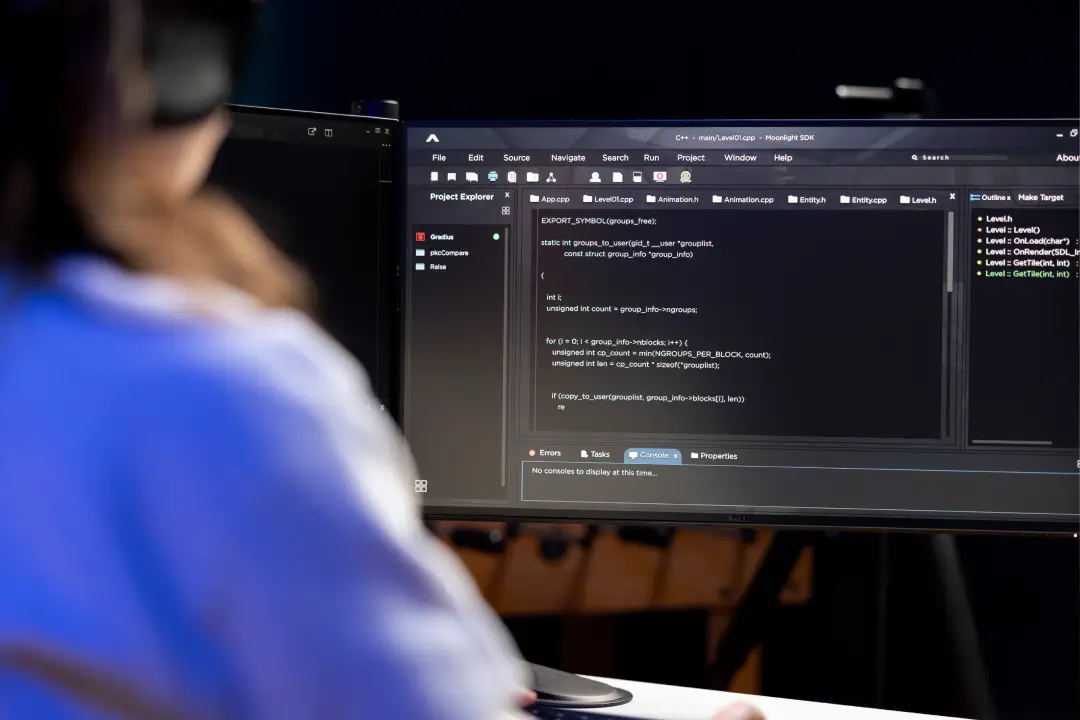10 Fun HTML, CSS, and JavaScript Projects to Practice and Improve Your Skills
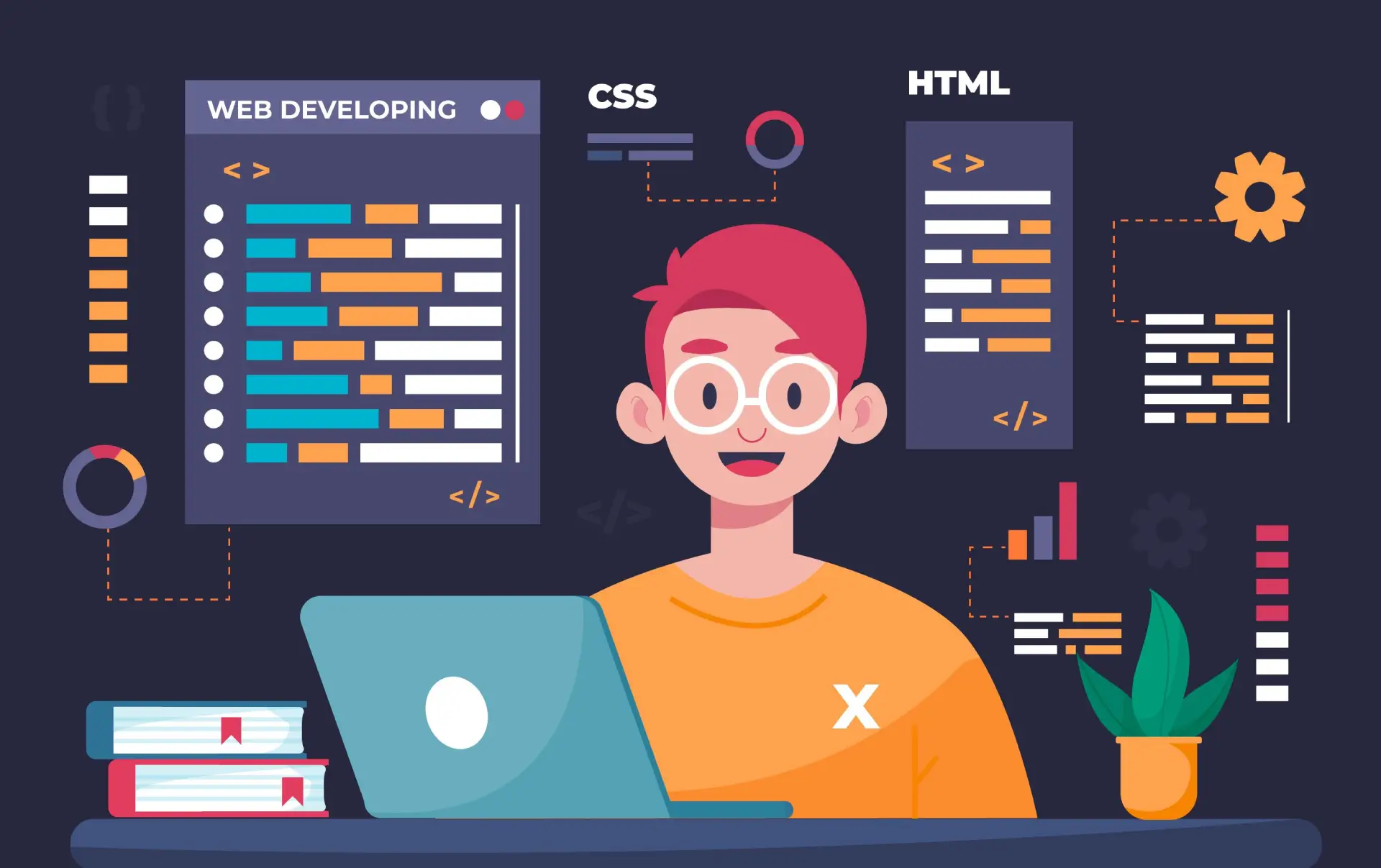
Learning to code is not just about reading tutorials or watching videos — it’s about building things with your own hands. The more you practice, the faster you grow as a developer. But sometimes it’s hard to decide what to build. That’s where small, beginner-friendly projects come in.
In this article, we’ll explore 10 fun and practical projects built with HTML, CSS, and JavaScript. These projects are not only simple enough for beginners but also realistic enough to give you a taste of real-world web development challenges.
From calculators and converters to animations and interactive forms, each project focuses on a specific skill. By the time you finish all of them, you’ll be more confident in:
-
Working with user inputs and forms
-
Performing real-time calculations with JavaScript
-
Styling interactive UI elements with CSS
-
Using DOM manipulation to update content dynamically
-
Creating fun effects with animations
Think of this as your mini portfolio of projects. Whether you’re preparing for interviews, learning by yourself, or just looking for fun coding challenges, these exercises will help you level up your coding skills step by step.
So, let’s dive into these 10 projects and see how each one can sharpen your skills and spark new ideas. 🚀
Age Calculator

| Proficiency Level | Description | GitHub Link |
|---|---|---|
| Beginner | HTML, CSS, and JavaScript | View Code |
The Age Calculator is a simple yet very practical project that allows users to quickly find out their exact age in years, months, and days. All they need to do is enter their date of birth, and the tool instantly shows the results in a clean and easy-to-read format.
This project is especially useful in situations like registration forms, personal profiles, or health-related apps where accurate age is required. While it looks simple, it introduces you to some important JavaScript concepts such as:
-
Working with the built-in
Date()object -
Handling calculations across months and leap years
-
Performing real-time updates to the page with DOM manipulation
On the design side, you’ll also practice building a user-friendly interface using HTML and CSS. The layout is responsive, ensuring the calculator looks good on both desktop and mobile devices.
👉 Try it yourself here: Age Calculator Demo
Beautiful Menu Item Design
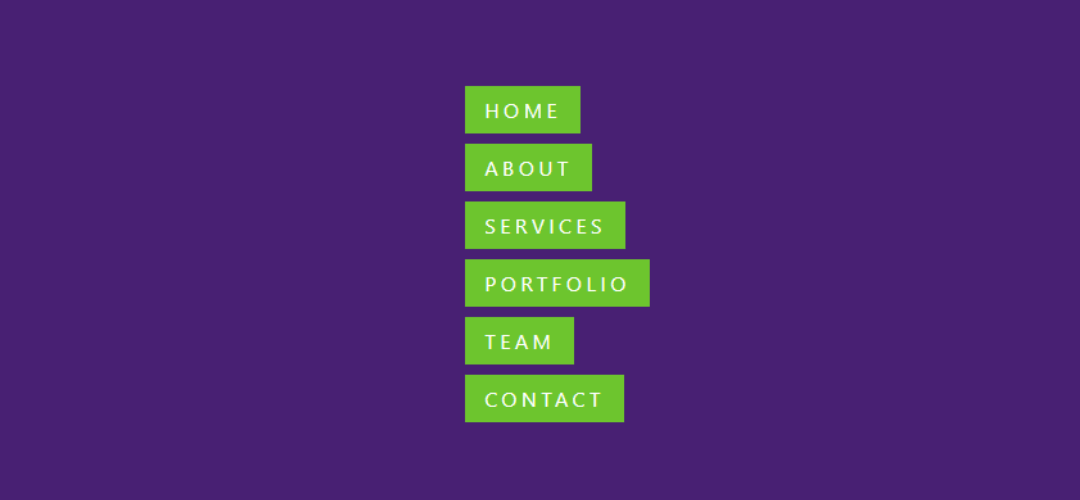
| Proficiency Level | Description | GitHub Link |
|---|---|---|
| Beginner | HTML, CSS | View Code |
The Beautiful Menu Item Design project showcases a modern and stylish navigation menu built with clean HTML and refined CSS. It transforms a basic menu into a visually appealing, interactive element—perfect for websites that want to present navigation that’s both functional and elegant.
This type of refined menu design is crucial for branding and user experience. A well-crafted menu guides visitors smoothly through your site and enhances the overall aesthetics. Behind the simplicity, this project helps you hone valuable skills in:
-
CSS styling techniques — including gradients, hover effects, and transitions that bring the menu to life.
-
Responsive layout design — making sure the menu responds well to different screen sizes using media queries or flex/grid layouts.
-
User interaction — how visual feedback (like hover or focus states) can improve navigation usability and clarity.
This project is a wonderful way to practice both design sensibilities and responsive techniques—all without needing JavaScript.
👉 Check it out here: Beautiful Menu Item Design Demo
BMI Calculator

| Proficiency Level | Description | GitHub Link |
|---|---|---|
| Beginner | HTML, CSS, and JavaScript | View Code |
The BMI Calculator is a handy project that allows users to calculate their Body Mass Index (BMI) by entering their height and weight. The app then instantly categorizes the result into ranges such as Underweight, Normal, Overweight, or Obese.
This project is not just a coding exercise—it’s a practical tool often found in fitness, health, or wellness applications. By building it, you’ll gain experience in:
-
Handling user inputs in forms and validating them before processing.
-
Performing basic arithmetic calculations in JavaScript.
-
Applying conditional logic to display different results depending on the BMI score.
-
Styling and organizing results using HTML and CSS for clarity and ease of use.
What makes this project fun is that you can easily extend it—like adding custom messages, tips, or even color-coded results to make the experience more engaging. It’s a beginner-friendly project that also demonstrates how coding can directly connect with real-life applications.
👉 Try it here: BMI Calculator Demo
Character Counter
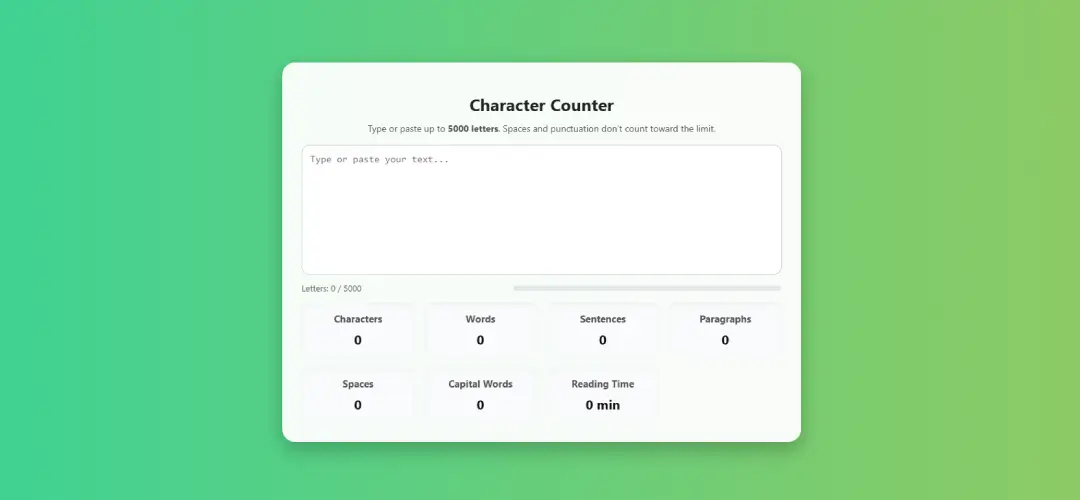
| Proficiency Level | Skill Required | GitHub Link |
|---|---|---|
| Intermediate | HTML, CSS, and JavaScript | View Code |
The Character Counter project is a simple but highly useful tool that shows users how many characters they have typed into a text area, and how many they have left. It’s often used in applications like social media platforms, feedback forms, or messaging apps, where character limits are important.
By building this project, you’ll sharpen your skills in:
-
Real-time event handling with JavaScript to update the count as the user types.
-
Managing character limits to prevent input beyond a certain length.
-
Practicing DOM manipulation to display dynamic feedback to users.
-
Enhancing usability with CSS styling, like changing colors when limits are reached.
Even though it’s a small project, it’s very practical. It teaches you how to combine input validation, real-time feedback, and clean design—three essential ingredients in building great web applications.
👉 Try it yourself here: Character Counter Demo
Countdown Timer
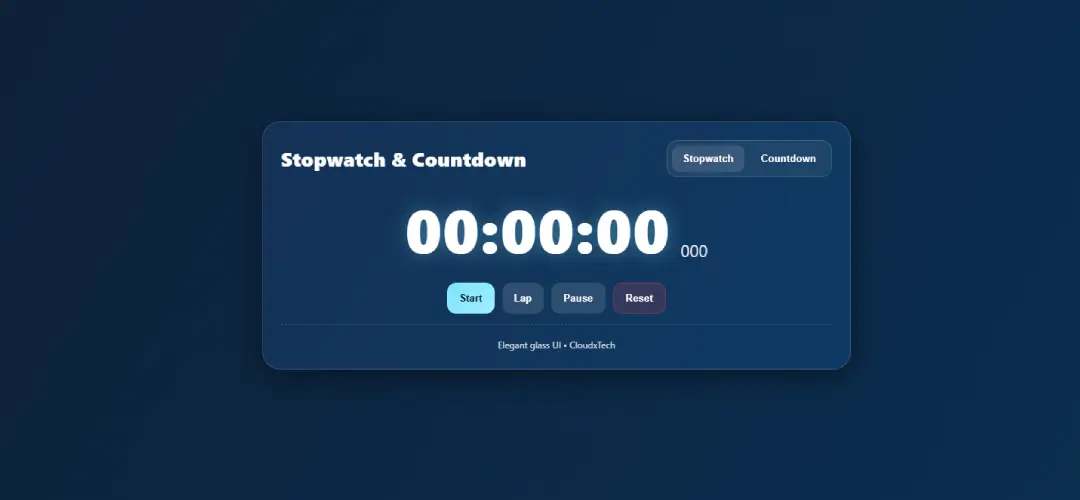
| Proficiency Level | Skill Required | Github Link |
|---|---|---|
| Intermediate | HTML, CSS, and JavaScript | View Code |
The Countdown Timer is a classic and exciting project that lets users set a future date and time, and then watch the timer tick down in real time until it reaches zero. You’ve probably seen it used in event pages, product launches, sales offers, or coming-soon websites.
Building this project gives you hands-on practice with:
-
Working with dates and time in JavaScript using the
Date()object. -
Calculating the difference between the current time and the target time.
-
Updating the countdown dynamically using intervals so the timer refreshes every second.
-
Designing an engaging and responsive layout with HTML and CSS that makes the countdown visually appealing.
This project is fun because it adds excitement and urgency, and it’s highly reusable—you can easily customize it for different events or campaigns. It’s a great way to deepen your understanding of JavaScript’s time functions while creating something visually impactful.
👉 Check it out here: Countdown Timer Demo
Custom Input Type File Design
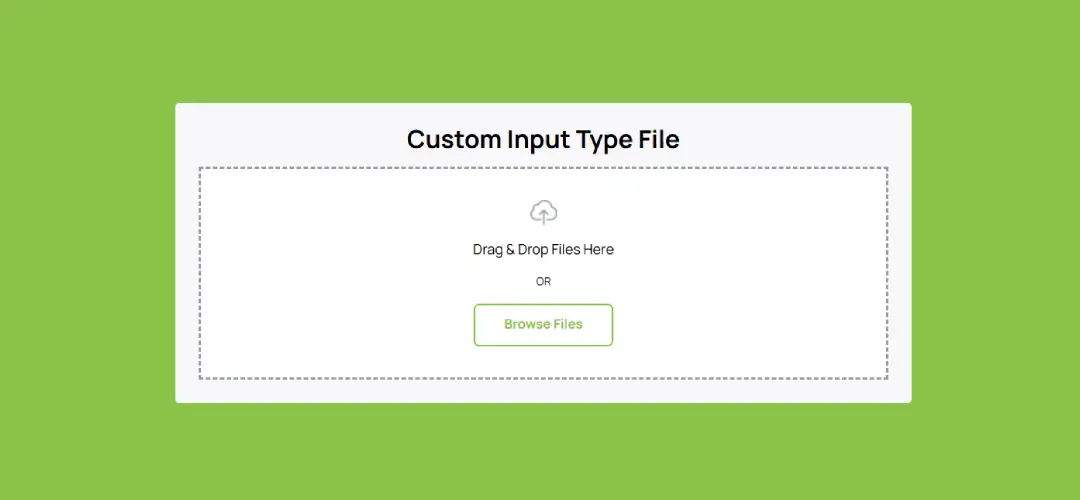
| Proficiency Level | Skill Required | GitHub Link |
|---|---|---|
| Beginner | HTML, CSS, and JavaScript | View Code |
The Custom Input Type File Design project takes the standard file upload input and transforms it into a stylish, user-friendly component. Normally, file inputs look plain and outdated across browsers, but with some creativity in HTML, CSS, and a bit of JavaScript, you can completely redesign it to match your site’s theme.
This project helps you practice:
-
Customizing default browser elements with CSS for a modern and polished look.
-
Adding JavaScript event listeners to show the selected file name after upload.
-
Using hover and focus effects to improve accessibility and user experience.
-
Building responsive designs so the upload button looks clean on both desktop and mobile.
A well-designed file input makes a big difference in user interaction, especially for forms, resumes, profile uploads, or e-commerce sites. This project is a small but powerful step toward mastering UI/UX design with code.
👉 Try it here: Custom Input File Demo
Distance Unit Converter
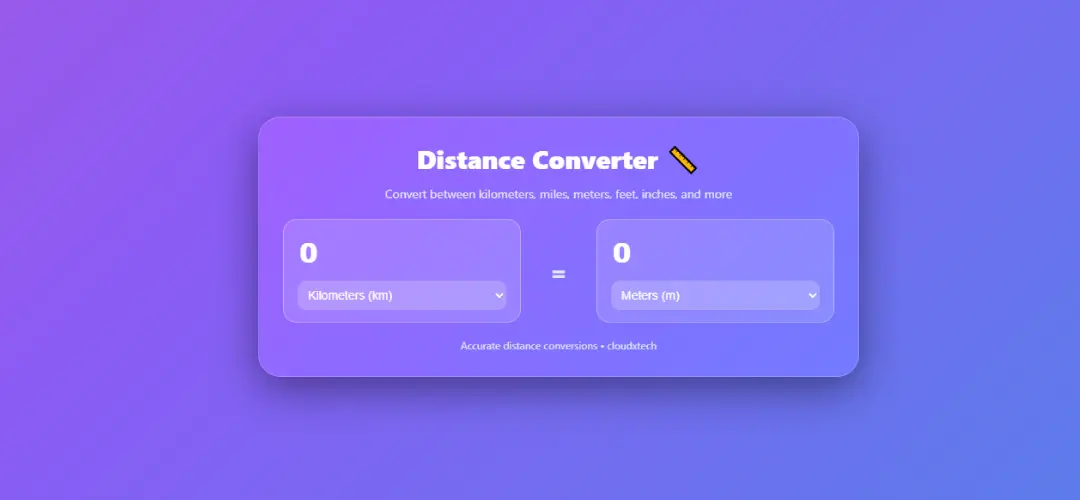
| Proficiency Level | Skill Required | GitHub Link |
|---|---|---|
| Beginner | HTML, CSS, and JavaScript | View Code |
The Distance Unit Converter is a practical project that allows users to convert values between common distance units such as kilometers, meters, centimeters, and feet. It’s an excellent example of how JavaScript can be used to handle real-world calculations and present results instantly on the screen.
By working on this project, you’ll strengthen your skills in:
-
Form handling and user inputs — taking a number from the user and validating it.
-
Performing mathematical conversions between multiple measurement units.
-
Updating results dynamically in the DOM without refreshing the page.
-
Creating a simple and responsive interface with HTML and CSS that’s easy to use.
This type of converter is especially handy in educational tools, engineering apps, or daily use cases where quick conversions are needed. It also teaches you how to structure JavaScript functions cleanly so they can be reused for multiple unit types.
👉 Give it a try here: Distance Unit Converter Demo
Funny Form Validation
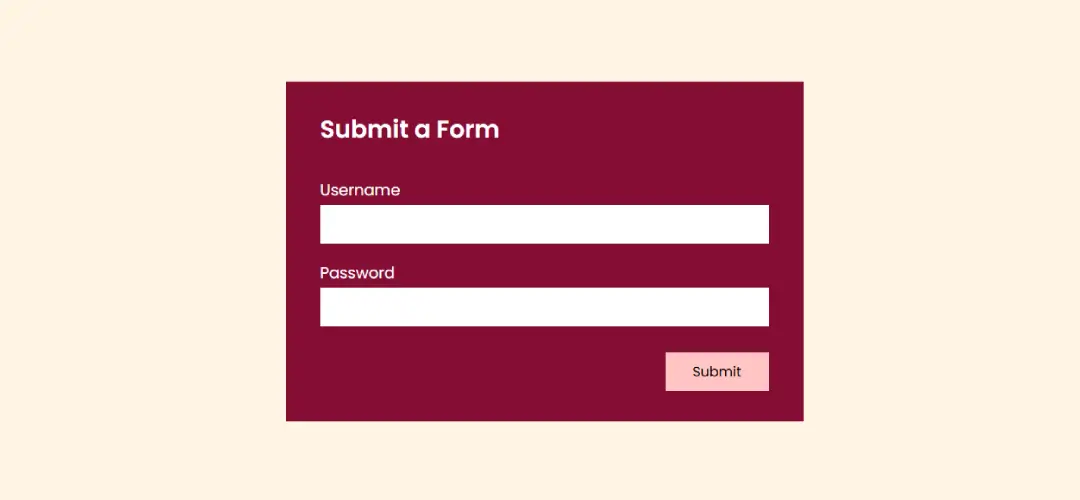
| Proficiency Level | Skill Required | GitHub Link |
|---|---|---|
| Beginner | HTML, CSS, and Jquery | View Code |
The Funny Form Validation project adds a playful twist to traditional form validation. Instead of simply showing error messages when fields are left empty, the submit button itself runs away whenever the user tries to click it—until all fields are correctly filled in.
This project is not only fun but also a great way to practice:
-
Form validation techniques in JavaScript to check for empty or invalid inputs.
-
Event handling by detecting when the mouse hovers or clicks on the button.
-
Adding a layer of interactive animations to make the button move left or right dynamically.
-
Improving user experience while making the validation process engaging and memorable.
While it’s meant to be humorous, this project teaches important front-end skills, such as preventing form submission with incorrect data and providing feedback in creative ways. It’s a fantastic project for beginners who want to learn coding while also making users smile.
👉 Test it here: Funny Form Validation Demo
Solar System
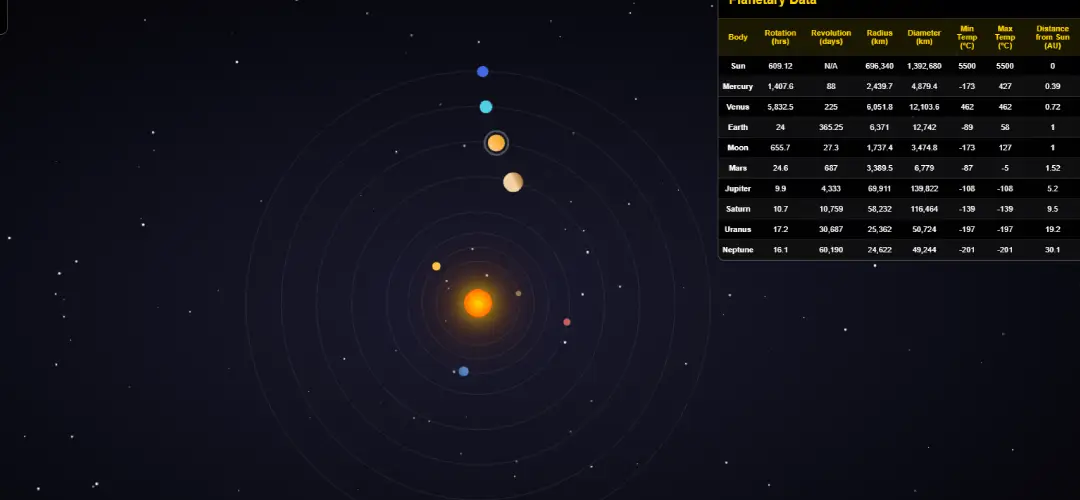
| Proficiency Level | Skill Required | GitHub Link |
|---|---|---|
| Intermediate | HTML, CSS, and JavaScript | View Code |
The Solar System project is a visually stunning demonstration of how you can use HTML, CSS, and JavaScript animations to recreate a miniature model of our planetary system. It shows planets orbiting around the sun, complete with smooth motions that make the experience both educational and fun to watch.
By building this project, you’ll explore:
-
CSS animations and keyframes to simulate orbital paths and planetary movement.
-
Using positioning techniques to arrange elements in a circular layout.
-
Adding scaling effects to differentiate planets by size and distance.
-
Enhancing visual appeal with colors, shadows, and transitions to make the scene more realistic.
This project is a great mix of creativity and technical skill. It not only improves your knowledge of CSS animations but also gives you confidence in crafting interactive visualizations. Projects like this are perfect for portfolios because they show your ability to combine design, logic, and imagination.
👉 Explore it here: Solar System Demo
Temperature Unit Converter
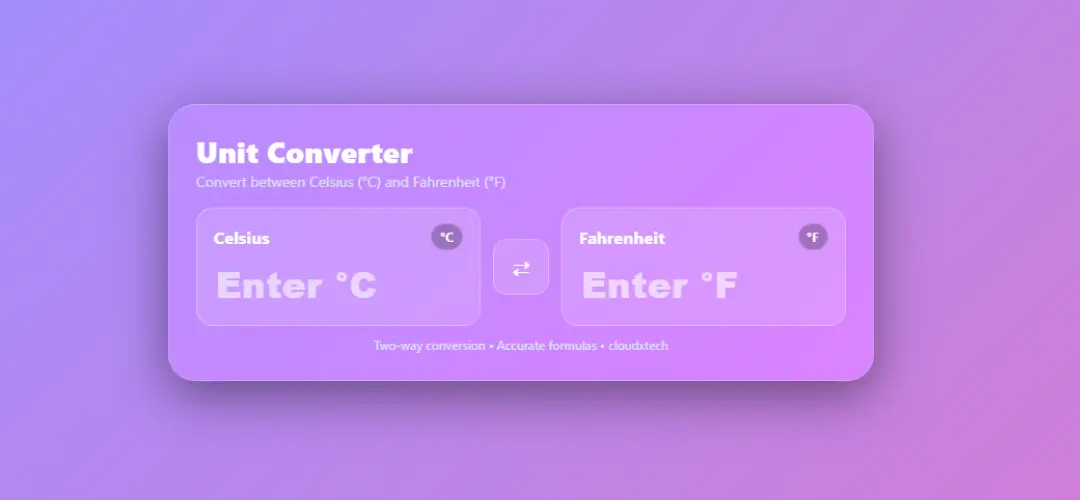
| Proficiency Level | Skill Required | GitHub Link |
|---|---|---|
| Beginner | HTML, CSS, and JavaScript | View Code |
The Temperature Unit Converter is a practical project that lets users easily convert temperatures between Celsius, Fahrenheit, and Kelvin. It’s a handy tool for students, travelers, and anyone working with different measurement systems.
By creating this project, you’ll learn how to:
-
Handle form inputs to take user-entered values.
-
Apply conversion formulas in JavaScript to calculate accurate results.
-
Update the interface dynamically without refreshing the page.
-
Style the layout with HTML and CSS for a clean, easy-to-use design.
This project may look simple, but it strengthens your understanding of how to structure reusable functions and work with mathematical operations in JavaScript. It’s also a great real-world utility that shows how coding can solve everyday problems.
👉 Try it now: Temperature Unit Converter Demo
Conclusion
Building small but meaningful projects is one of the best ways to grow as a developer. The 10 projects we explored—ranging from practical tools like the Age Calculator and Temperature Converter, to fun and creative ones like the Funny Form Validation and Solar System—cover a variety of essential web development concepts.
Each project helps you practice different skills, such as JavaScript logic, CSS animations, DOM manipulation, and responsive design, while also giving you real-world examples you can showcase in your portfolio. The best part is that these projects are simple enough to start quickly, yet powerful enough to make you a more confident and creative developer.
If you enjoyed these, you’ll be happy to know that there are even more exciting projects you can explore. Check out the full collection here: 👉 All Projects on CloudXTech
Keep experimenting, keep learning, and most importantly—have fun building! 🚀
Recent On cloudxtech
Mastering GitHub from the Command Line: Push, Pull, and Repo Management Made Easy
September 4, 2025 • 5 minute(s) read
10 Fun HTML, CSS, and JavaScript Projects to Practice and Improve Your Skills
August 26, 2025 • 11 minute(s) read
Beginner Frontend Projects with HTML, CSS, JS, and jQuery – Free to Use and Download
August 11, 2025 • 4 minute(s) read
Best Chrome Extensions for Web Developers in 2025
June 12, 2025 • 3 minute(s) read
JN Form Validation: Simplify Client-Side Validation with Ease
May 22, 2025 • 4 minute(s) read
🌊 The Indus Waters Treaty: A Historic Pact and its Dramatic Suspension in 2025
April 27, 2025 • 5 minute(s) read







